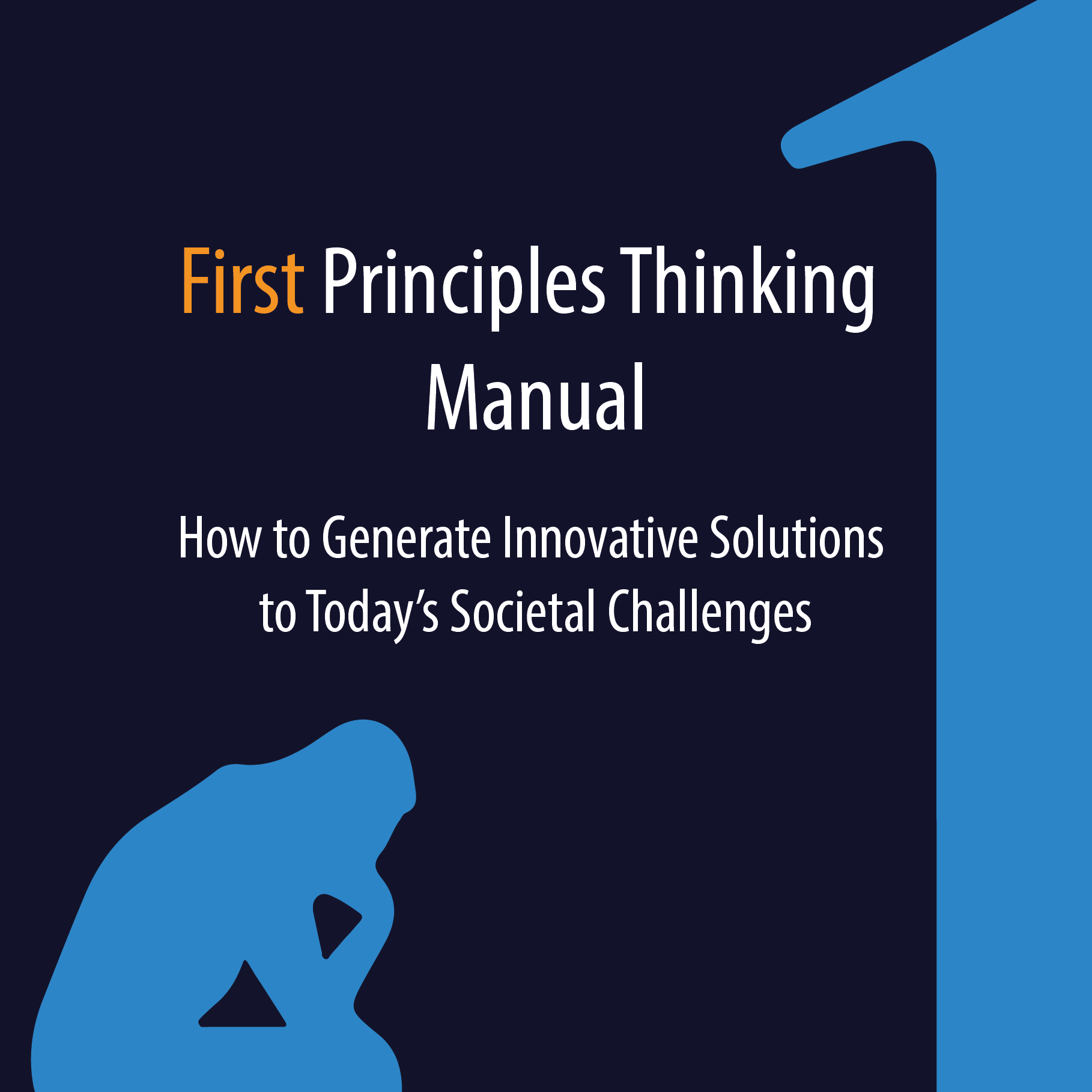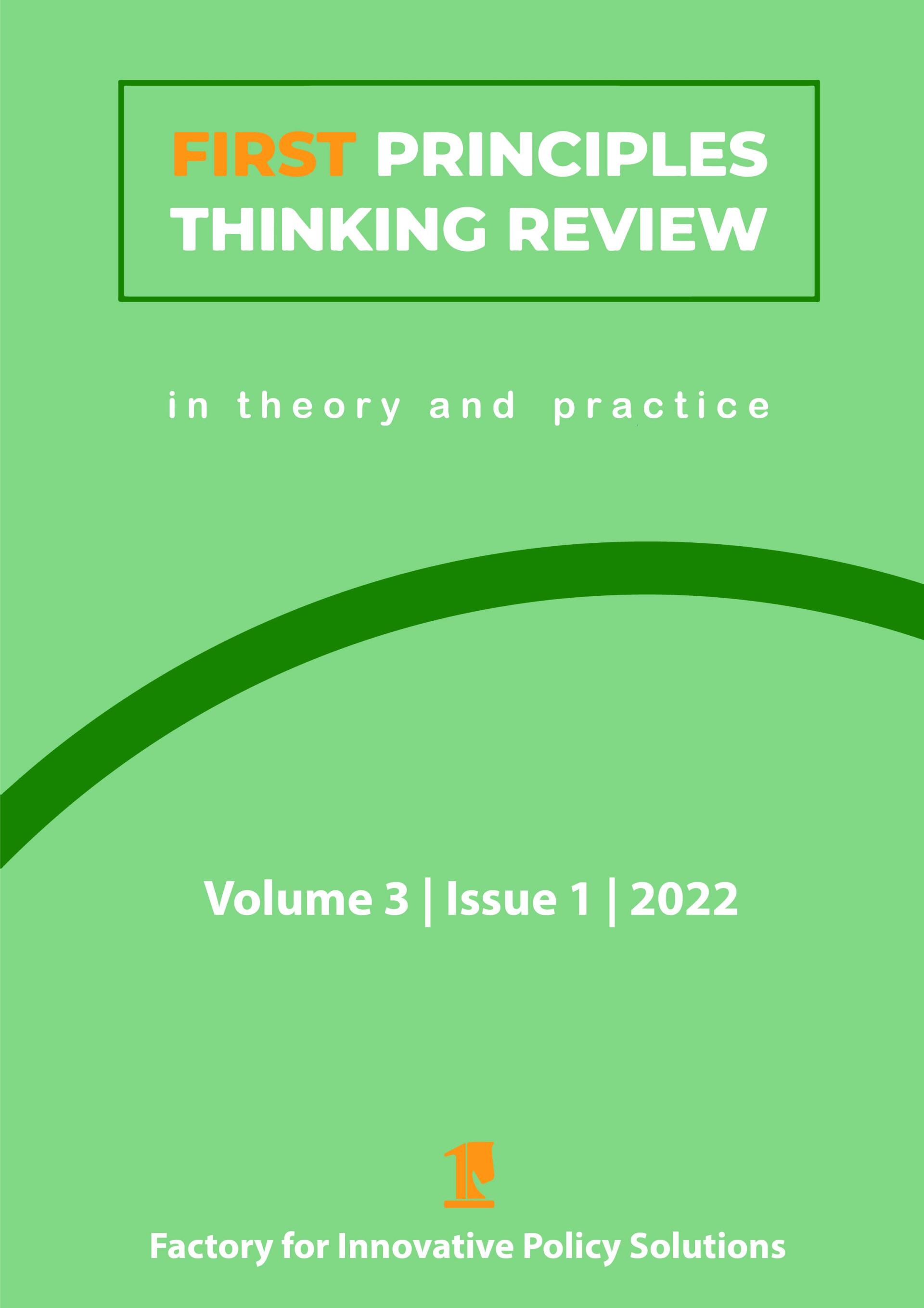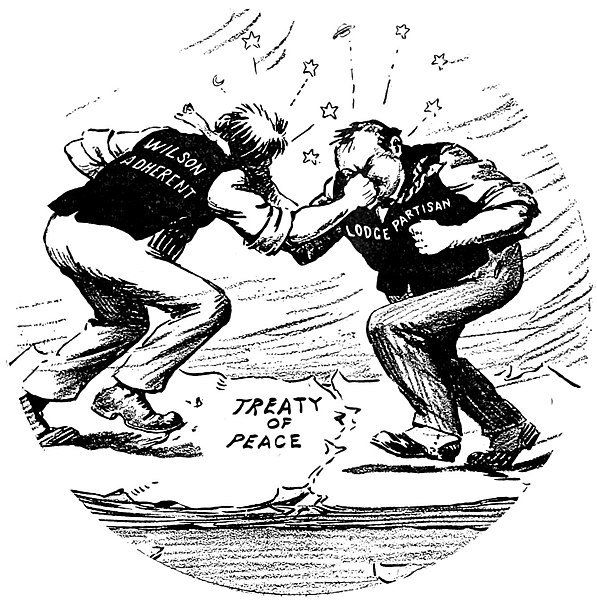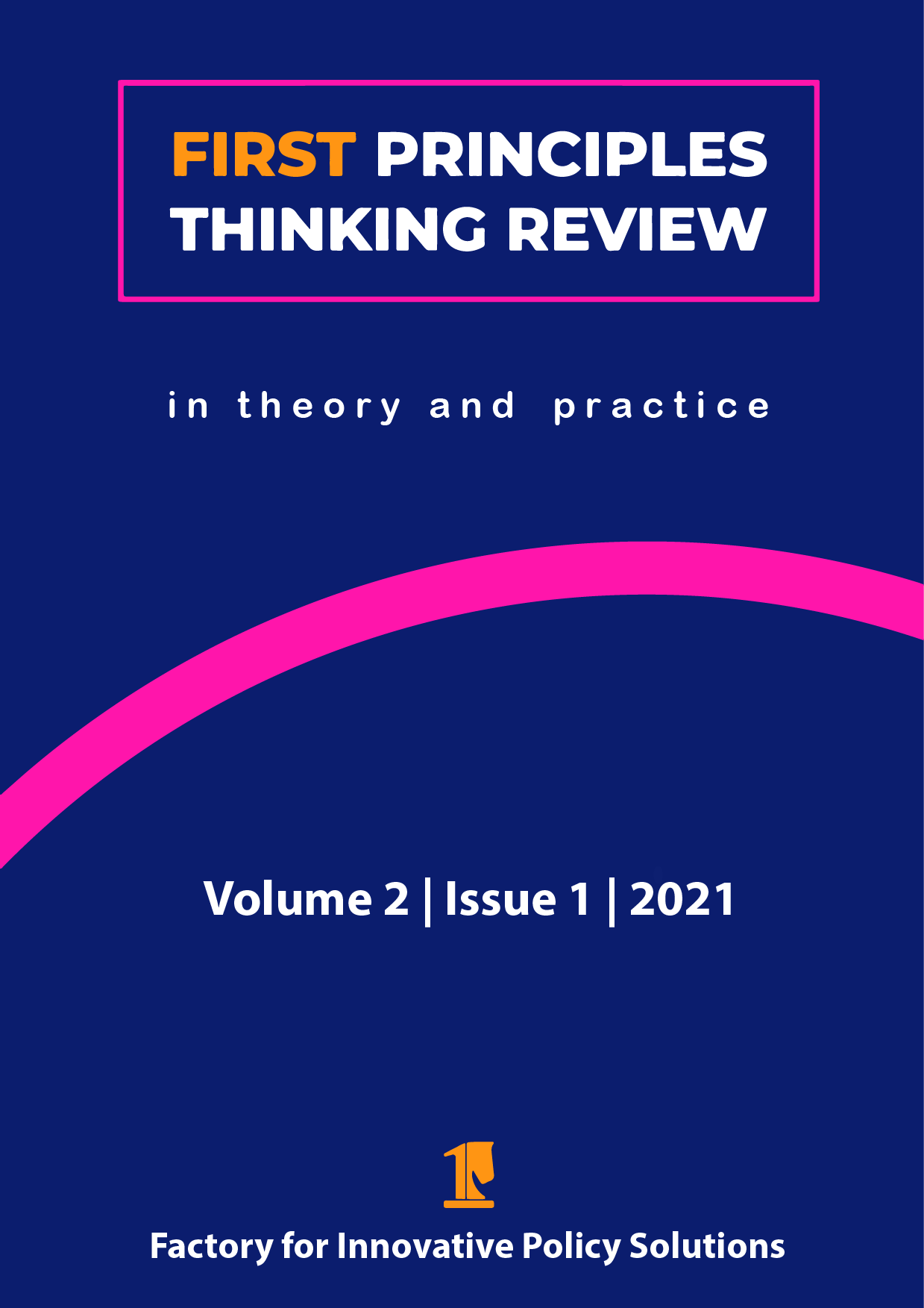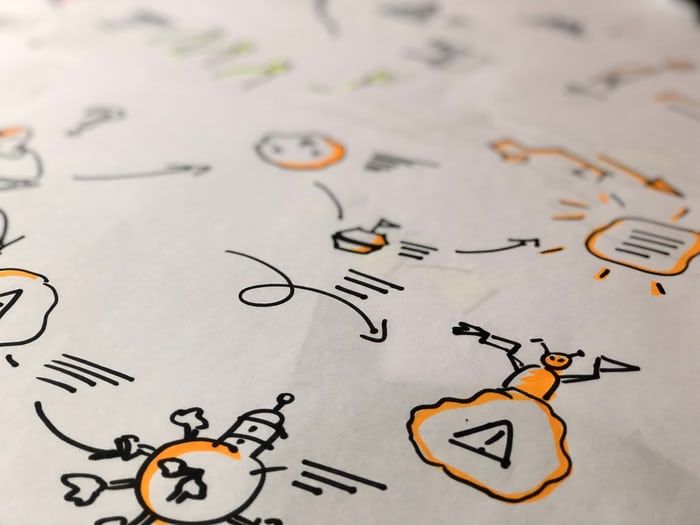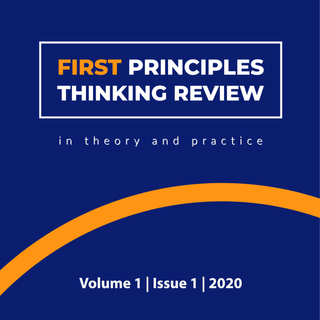The Role of First Principles Thinking in Singapore’s Nation-Building

Photo by Joshua Ang
Upon becoming an independent city-state in 1965, Singapore had to overcome the challenges of nation-building in a small but culturally and ethnically diverse territory. In his search for solutions, Lee Kuan Yew (LKY), the country’s founding father, employed first principles thinking as a societal problem-solving technique. By identifying three first principles at the root of his challenge, LKY was able to overcome the obstacles of nation-building and lay the foundations for a cohesive and prosperous society in Singapore.
Keywords: First principles thinking, Lee Kuan Yew, nation building, Singapore
Introduction
Design thinking, Agile, Business Model Canvas, and Jobs to be Done are just a few of the frameworks that are popularly used in many industries. First Principles Thinking (FPT) was one of those that I came across, but it stuck with me because of its elegance and efficacy of problem solving. It was made popular by Elon Musk with his famous example of solving the problem of the high cost of batteries at Tesla. He broke down the battery to its most basic material constituents and purchased them off the London Metal Exchange to reduce the cost to $80/kwh (vs $600/kwh). This was one of many examples that Musk uses FPT to solve, from Tesla to SpaceX. Most of the examples were specific to engineering and technical fields, so I parked FPT as a point of reference in my memory hoping to dust it off when I did have a technical problem to solve in future.
Months down the road I chanced upon a YouTube recommended video on an interview with Fareed Zakaria of CNN featuring the late founding father of modern Singapore, Lee Kuan Yew (LKY) (CNN, 2008). In it, LKY talked about Singapore and how he transformed a relatively small low-income country into the modern metropolis that it is today. He briefly mentioned using FPT in formulating policy, and it instantly revived that dusty file parked in the corner of my brain. This piqued my interest because it was the first time I had heard of FPT being used in a non-technical situation, so wanted to learn more and perhaps share my findings with the rest of the world. My aim in this article is to explore the way LKY approached the social issues faced by Singapore during the early years of its development and see to what extent FPT played a role. In doing so I use the FPT framework provided in the
First Principles Thinking Manual (Verkerk & Grass, 2019).
Lee Kuan Yew’s approach to FPT
LKY was born in 1923. He was a fourth-generation Singaporean whose great grandfather emigrated from Guangdong, China, in 1863. LKY was an extremely bright student in school, coming in top at every level. He graduated First Class at Cambridge Law in 1949 and went on to become a legal advisor to trade and student unions (Kuan Yew, 2000). And from here he moved on to start his political career. One striking feature of LKY was his pragmatic approach to every problem; he was not an ideological or dogmatic person. He did not work on a theory but rather asked, “what will make this work?”. If, after a series of such solutions, a certain approach worked, he would try to find out what the principle behind the solution was (Plate, 2010, p. 46-47).
LKY was tasked with building a nation
LKY came onto the scene during a crucial period in Singapore’s history when it was expelled from the Federation of Malaya (Malaysia presently) because of ideological differences. This meant that Singapore was to be independent and had to fend for itself without support. Singapore had a few immediate issues to tackle: mass unemployment, a lack of natural resources, housing shortages, neighboring country aggression, and withdrawal of military support from the British, just to name a few. LKY and his team had to plug the holes of a fragile Singapore in its early years of independence after 1965 so that they would not lead to the failure of the nascent state. He and his team had to set the right policies, and ultimately build a nation and economy that was without natural resources, limited to a small 700 sq km space, and consisting of a multi-cultural, multi-racial, multi-religious society of low skill and education.
Obstacles to building a nation
In 1819 when the British bought Singapore from the Sultan of Johore (in Malaya), they made Singapore a key trading hub for the East India Company. Trade flourished with various races flocking to this port, living together in relative peace—the local Malays discussed ideas, published articles, Chinese merchants traded, and Indian Chettiars exchanged monies (Tai Song, 2019, p. 63). Apart from the rule of law and administration, the British generally left society to run on its own. However, after World War II, the social atmosphere started to shift. There was a rise in anti-colonial sentiment and a need to break away from British rule. This started Singapore on its journey toward independence with the need to form a common identity. The challenge lies with its heterogeneous population of various races and religions.
Singapore did not have the proper ingredients to build a national identity—a city state without “indigenous rootedness, civilizational lineage, or cultural, religious, ethnic and linguistic homogeneity” (Tai Song, 2019, p. 118). Nor did it go through the “fire of war or revolution”, which put Singapore in a unique situation with no comparison or examples to emulate (Iqbal Latif & Leng Lee, 2015, p. 49). With such a challenge, how could LKY synergize a diverse group of people, motivate them to work towards the common good of a newly formed country, and create policies that best fit Singapore’s context?
LKY’s first principles
According to the book Lee Kuan Yew: The Man and His Ideas, LKY raised 3 ‘first principles’, defined by Aristotle as the basis from which a thing is known, that contributed to his policy decisions. Although he did not use this term in his book, he did describe them as “fundamental human truths”. Using his observation, reading, arguing, and asking LKY postulated that (Fook Kwang et al., 2015, p. 175):
- Individuals strive for their success and their family
- Different races have different abilities
- Culture defines success
First principle 1: Individuals strive for their success and their family
In determining policies for welfare in Singapore, LKY had considered whether Singapore should adopt similar policies like that of Western welfare states, with cradle-to-grave benefits. It would prove costly, especially in the early years of development where Singapore just managed to escape the poverty line, but would also be beneficial to the citizens going through deprivation. One observation he shared was on Britain in the 1940s and 50s post-war period, where Britain was moving away from the hardships of war, and benefits such as food, clothes, housing were subsidised. However, in the 70s, 80s, and 90s, the effects of this redistribution of wealth, not dependent on individual effort, resulted in a slowing economy and the lack of achievement and abundance became apparent (Fook Kwang et al., 2015, p. 160). This hints to the fact that if the state took over the responsibility of individuals' needs and wants, it would also remove the motivation of individuals.
Another example he shared, closer to home, was about Chinese culture and history. The extended family network and clan who supported each other for survival, had existed for thousands of years during wars, famines, devastations and floods. There was no government agency to provide aid back then, so people only had their communities to help them. He also saw first-hand how that happened during World War II, when the Japanese occupied Singapore. If medicine was in short supply, immediate relatives, extended families and maybe very close friends were the only ones who could help.
This led him to the following first principle: the innate motivation of individuals was for their own personal success and that of their families and the government should support the traditional family units rather than take over that responsibility. If the government takes on the full responsibility like Britain from the 70s to 90s, the lack of motivation would lead to a less vibrant economy. To further add to this, he gave an example of Communist China, where the state “tried to dismantle families by separating them into communes, with husbands and wives sent to different parts of the country to work. It did not work and they admitted that it was wrong” (Fook Kwang et al., 2015, p. 163).
Thus LKY was against welfare policies, even in the area of healthcare, so instead of a full subsidy for free healthcare for all like in some Western welfare societies, he adopted a co-share approach called Medisave, in which a part of a person's income goes toward a savings program that can be taken out at a later date for personal healthcare (Central Provident Fund Board, n.d.). This is Singapore’s version of welfare, where co-payment and shared responsibility continue to be the mainstay for the provision of public goods such as healthcare and other social services (Public Service Division, n.d.).
First principle 2: Different people and races have different abilities
As Singapore was a diverse multi-racial population, LKY believed that policy-making had to be tailored to fit this context. In this case, could a one-size-fits-all policy work in Singapore? In his early years at Cambridge, LKY was drawn “to the ideals of the British Fabians, a group of left-wing intellectuals at the vanguard of the Labour Party at the time”, who believed that inequality in society came largely from unequal opportunities. Hence, if differences in access to economic and social opportunities were removed, the gap between the rich and poor would also close (Fook Kwang et al., 2015, p. 154).
In reality, he soon discovered, this was not the case. In the early stages of Singapore’s development in the 1950s and 60s, when the majority of the people were poor, uneducated, blue-collared workers and giving their children equal opportunities for education, Singapore was able to produce 60-70% of the best scholars from this group. However, over time as the overall population became educated, that proportion changed drastically, with the highly educated group which makes up about 20% of the population producing 70% of the scholars in Singapore (Fook Kwang et al., 2015, p. 155). In other words, equal opportunities did produce positive outcomes initially but it reached a point where it no longer made a huge difference. Instead, it showed that the best and brightest only came from the top layer of society. This was also evident among the different races in Singapore, whose especially multi-racial society amplified ethnic achievement starkly.
When the book The Bell Curve was published in 1994 by Charles Murray and Richard Herrnstein, it addressed the question of disparities in intellect among different races, and argued that some men or races were more endowed than others, which caused much criticism and condemnation, especially from the politically-correct intelligentsia. The findings from The Bell Curve did, however, not surprise LKY but simply validated his belief in the principle that not all men were created equally in ability. According to Murray and Herrnstein, their purpose for publishing the book was to be open with data collected and prevent misinformation and assumptions from spreading with regards to intelligence being purely environmental (Herrnstein & Murray, 1996, p. 350). Unfortunately, although most readers focus on the chapter in which their findings show a disparity between race and IQ, the central focus is actually on IQ across various social behaviours (e.g. poverty, schooling, family, crime etc.).
Long before The Bell Curve was published, and before Murray and Herrnstein’s attempts to confront the taboos that lead to ignorance in America, LKY already saw a potential problem if this potential misinformation was not addressed openly to the public. According to Fook Kwang et al. (2015), LKY argued that if Singapore followed the likes of America, and supposing we had hidden the assumed fact that not all men have equal abilities and IQ, then the less able or well-off would demand equal results. If he didn’t bring it out, his successors would face a problem of credibility. Because they can’t bring it out, they would say we’re trying to escape the responsibility. As such, LKY states, not to come to terms with this is to deceive yourself and be pursuing policies which would bring no good (p. 154). Based on his observation of examination results—and backed up later by evidence from The Bell Curve findings—LKY concluded the fundamental truth that not all people were given equal abilities, which meant unequal outcomes or results, even with equal opportunities.
So in formulating the policies for Singapore, he adopted a meritocratic system where the best and brightest, with the most ability and skill get drawn to the top rungs of society. This gave everyone an opportunity to compete on an equal level at the start, and then those who were competent would be rewarded and rise up in society (Fook Kwang et al., 2015, p. 155). But what of the less abled in society? LKY and the founding team came up with policies to help bridge the education gap within the minority Malay community who were lagging behind national educational standards as well as professionally (Tan, 1995, p. 344). For instance, in the 1960s, the government provided free secondary and tertiary education, special bursaries and scholarships, as well as free textbooks and transport allowances to deserving individuals in the Malay community (Zahoor Ahmad, 1969). However, this did not help much since additionally the Malays did not share the similar cultural beliefs of success as initially thought, which leads to the other first principle raised by LKY: culture defines success.
First principle 3: Culture defines success
If genetics cannot be changed, could culture be tinkered and changed for the better? LKY wanted to create the right culture that would allow Singapore to succeed economically (Fook Kwang et al., 2015, p. 179). LKY grappled with the question of why some people or societies were more skilled, hard-driving, and successful than others (Fook Kwang et al., 2015, p. 171). He gave an example of how culture made an impression on him. During a state visit to Japan, where he was invited to dinner at a small hotel in an island province, a chef who served him performed a demonstration of peeling persimmons into beautiful shapes on a plate, with much pride and perfection. He later learnt that his position took 3-5 years of learning simple things, and only after 15 years does one become a chief chef. Similarly, even after Japan lost the war and the Japanese prisoners of war in Singapore had to clean the streets, they did it well without reluctance or humiliation; they took pride in their work (Fook Kwang et al., 2015, p. 174).
Was nature (genetics) the cause of success as he had previously thought about with regards to race and ability? Or did nurture (culture) have a part to play? After all, with the previous example, Japanese society was relatively homogeneous in terms of culture and race. LKY shared his thoughts about this in a speech in Tokyo in 1967:
“I like to demarcate [...] the basis of the difference in the tempo […] East Asia, Korea, Japan, and mainland China […] were supposed to be Mahayana Buddhists. And then there is Cambodia, Thailand, Burma, Ceylon, which are supposed to be Hinayana Buddhist. According to Hinayana Buddhist, if the bedbug disturbs you, you take your mattress and shake it off; there is that compassion not only for the human being but for the bedbug [...] But watching the Japanese over the years, I have not the slightest doubt that is not what they do...this makes some difference. [...] It is something deeper. It is part of the tempo, the way of life” (Kuan Yew, 1967).
At one time, LKY contended that as much as 80% was due to nature, but rather than be embroiled in the debate of nature vs nurture, he contended that there is no denying the fact that culture was a key determinant of the success of certain groups over the years (Fook Kwang et al., 2015, p. 175). In Singapore’s case with various cultures, how would policy work, especially with respect to the Malay community who share different views? A sociologist by the name of Judith Djamour did a study on the Malay community in the 1940s and 50s and posited that the Chinese considered acquisition of wealth to be the goal in life, whereas the Malays valued the importance of easy and graceful living (Djamour, 1959). Another sociologist, Bryan Parkinson explained that this difference in value or culture is not irrational or that one culture is superior to the other, but rather that Chinese culture would lead to economic development more so than the Malay culture.
The desire to succeed is no less present in the Malay community than compared with others, but it is just that success means something different to them. “The Malays seem to regard success as doing what their forebears have approved and practised, but doing it as well as they can. Wealth and economic advancement are desired by the Malays, but not at the expense of renouncing utterly the traditions and the traditional occupations of their forefathers’ to which they have grown accustomed”. He concluded that criticizing this value would be reprehensible, but if values remain unchanged then so too will the economic advancement for them (London School of Economics and Political Science, 2013, p. 10).
Knowing this, there were still attempts to bridge the gap by creating quotas for public housing, known today in Singapore as the Ethnic Integration Policy (EIP), with the purpose of intermingling races together so that by being in a more multiracial environment, Malay children would become more competitive and more striving (Housing and Development Board, n.d.; Kuan Yew, 1968). But in the back of his mind, LKY knew that the gap could not be bridged easily or in the near future. With this conclusion, he did not try to hide the issue but instead openly confronted it to the public and press. His purpose was to prevent any misunderstanding from happening, that this issue on race would have nothing to do with discrimination or lack of support. By openly discussing it, he believed he would get results, whereas if he were to sweep it under the carpet and not face up to the truth, it would lead to poor policies.
Singapore nowadays
As Singapore recently celebrated its 56th year as an independent country, much has changed since the policies LKY and the founding team had come up with.
Welfare in Singapore
In terms of social spending, the government health expenditure in Singapore in 2011 accounted for 1.34% of GDP, whereas in Japan and Korea, it accounted for approximately 8.32% and 3.82%, respectively with approximately 70-80% of Singaporeans obtaining their medical care within the public health system (Lee & Qian, 2017; Singapore Ministry of Health, n.d.). However, because of this co-sharing principle, access to healthcare is deeply dependent on regular income. This is especially true for individuals from low-income families, who may not get access to healthcare as swiftly if they are without a regular job due to the bureaucracy needed to apply for government support (You Yenn, 2019, p. 163-164).
Meritocratic culture
Seeing how this system of meritocracy has played out in Singapore over the past 56 years, the results speak for themselves. In 1965 the GDP per capita was $4,000 and to $54,000 in 2015 (World Bank, 2010). In a recent survey done by IPSOS on national identity, 85% of respondents said they were proud to be Singaporean, and Business Insider also ranked Singapore as one of the 19 most patriotic countries in the world (Business Insider, 2016; IPSOS, 2020). This is a considerable achievement for such a short and abrupt history without much of a natural unifying force behind its growth.
Of course, not all systems are perfect, and with meritocracy come certain negative externalities that can be seen in society. There is a culture of elitism and social divide not so much between races and religion but more along class lines: “On average, Singaporeans who live in public housing have
fewer than one friend who lives in private housing. Additionally, those who attend elite schools also tend to have fewer friends in non-elite schools, and vice versa” (Global-is-Asian, 2018). This ingrained culture has led some to criticise the elitism that is prevalent in the community, which has also resulted in students defining their self-worth based on grades and having less interaction with students of other social classes (Phneah, n.d.).
How effective was LKY using FPT?
In this example, LKY did apply most of the FPT steps. He knew what his objective was (to build a nation), understood the obstacles before him (a heterogeneous society), and was aware of his assumptions and sought to uncover the fundamental truths behind the Singaporean society. However, he did not exactly create a novel solution. He also did not publicly question his assumptions, or they may not have been written down explicitly. In a purist sense, LKY did not follow FPT, as it is defined today, to the letter but definitely to the spirit.
Even though LKY was highly educated, he was a pragmatist and not one who just dabbles in theories. As he said, “A theory is an attractive proposition intellectually. What we faced was a real problem of human beings looking for work, to be paid, to buy their food, their clothes, their homes and to raise their children.” So his litmus test for theories was: Does it work? Does it bring benefits to the people (Fook Kwang et al., 2015, p. 109)? One could argue that the spirit of FPT stems from a scientific approach, void of bias with the ultimate aim of solving a problem, and based on this, LKY followed the spirit of FPT even though his solution was not unique.
Conclusion
Whilst LKY may not have followed FPT down the letter, as much as we may like, his policies, which were based on a number of first principles, have proven themselves over the years. In less than 60 years, Singapore has been transformed from a jumble of races doing their own things to a united republic. A famous saying written on an epitaph at St Paul’s Cathedral London by Christopher Wren, the architect who built it, can be applied to LKY’s achievements: “Si monumentum requiris circumspice,” translated as “If you would seek my monument, look around you.”
Although you won’t find a public monument of LKY in Singapore, you can certainly see his handiwork in the city and its people and in what Singapore has achieved in just over five decades. In a similar thread, I would like to think that FPT had some part to play in this, which proves that it stands the test of time and is an immutable principle beyond the context of science!
References
- Business Insider. (2016). 19 Most Patriotic Countries in the World. https://www.businessinsider.com/yougov-19-most-patriotic-countries-in-the-world-2016-11#15-singapore-5
- Central Provident Fund Board. (n.d.). MediSave. https://www.cpf.gov.sg/Members/Schemes/schemes/healthcare/medisave
- CNN. (2008). Lee Kuan Yew - Interview with Fareed Zakaria. https://www.youtube.com/watch?v=uLyPpUsNkAE
- Djamour, J. (1959). Malay Kinship and Marriage in Singapore. Routledge.
- Global-is-Asian. (2018). Meritocracy in Singapore: Solution or Problem? Lee Kuan Yew School of Public Policy. https://lkyspp.nus.edu.sg/gia/video/meritocracy-in-singapore-solution-or-problem
- Han, F.W., Fernandez, W., & Tan, S. (2015). Lee Kuan Yew: The Man and His Ideas. Marshall Cavendish.
- Herrnstein, R. J., & Murray, C. (1996). The Bell Curve: Intelligence and Class Structure in American Life. Free Press.
- Housing and Development Board. (n.d.). Ethnic Integration Policy and SPR Quota. https://www.hdb.gov.sg/residential/buying-a-flat/resale/eligibility/ethnic-integration-policy-and-spr-quota
- IPSOS. (2020). Singaporeans on National Values and Identity. News & Polls. https://www.ipsos.com/en-sg/singaporeans-national-values-and-identity
- Iqbal Latif, A., & Leng Lee, H. (Eds.). (2015). George Yeo on Bonsai, Banyan and the Tao. World Scientific Publishing Co.
- Kuan Yew, L. (1967). Being a Hard Nation: Foreign Correspondents Association Dinner Speech.
- Kuan Yew, L. (1968). The Difference Between the Malays and the Chinese: Southeast Asia Business Committee Meeting Dinner Speech.
- Kuan Yew, L. (2000). From Third World to First. Marshall Cavendish.
- Lee, S. A., & Qian, J. (2017). The Evolving Singaporean Welfare State. Social Policy and Administration, 51(6), 916–939.
- London School of Economics and Political Science. (2013). Monographs on Social Anthropology. HardPress Publishing.
- Phneah, J. (n.d.). Why Elitism in Singapore Exists & How to Change It. https://www.jeraldinephneah.com/elitism-in-singapore/
- Plate, T. (2010). Conversations with Lee Kuan Yew, Citizen Singapore: How to Build a Nation. Marshall Cavendish.
- Public Service Division. (n.d.). Supporting Singaporeans and Ensuring No One Is Left Behind. https://www.psd.gov.sg/heartofpublicservice/our-institutions/supporting-singaporeans-and-ensuring-no-one-is-left-behind/
- Singapore Ministry of Health. (n.d.). Resources & Statistics.
- Tan, J. (1995). Joint Government-Malay Community Efforts to Improve Malay Educational Achievement in Singapore. Comparative Education, 31(3), 339–353.
- Tan, T.Y. (2019). The Idea of Singapore: Small and Unconstrained. World Scientific Publishing Co.
- Verkerk, A., & Grass, K. (2019). First Principles Thinking for Societal Problem-Solving: A Manual to Generate Innovative Solutions to Today’s Challenges. Factory for Innovative Policy Solutions. https://irp-cdn.multiscreensite.com/101291b2/files/uploaded/PROMO%20-%20First%20Principles%20Thinking%20Manual%20by%20FIPS.pdf
- World Bank. (2010). GDP Per Capita - Singapore. https://data.worldbank.org/indicator/NY.GDP.PCAP.KD?locations=SG
- You Yenn, T. (2019). This Is What Inequality Looks Like. Ethos Books.
- Zahoor Ahmad, B. H. F. H. (1969).
Policies and Politics in Malay Education in Singapore 1951-1965.
Apply first principles thinking yourself?
Would you like to apply first principles thinking yourself and have your problem-solving experience published in the First Principles Thinking Review? Then be sure to check out the submission guidelines and send us your rough idea or topic proposal. Our editorial team would be happy to work with you to turn that idea into an article.
Share this page
Disclaimer : The views, thoughts and opinions expressed in submissions published by FIPS reflect those of the authors and do not necessarily reflect the views held by FIPS, the FIPS team or the authors' employer.
Copyrights : You are more than welcome to share this article. If you want to use this material, for example when writing an article of your own, keep in mind that we use cc license BY-NC-SA. Learn more about the cc license here .
What's new?
